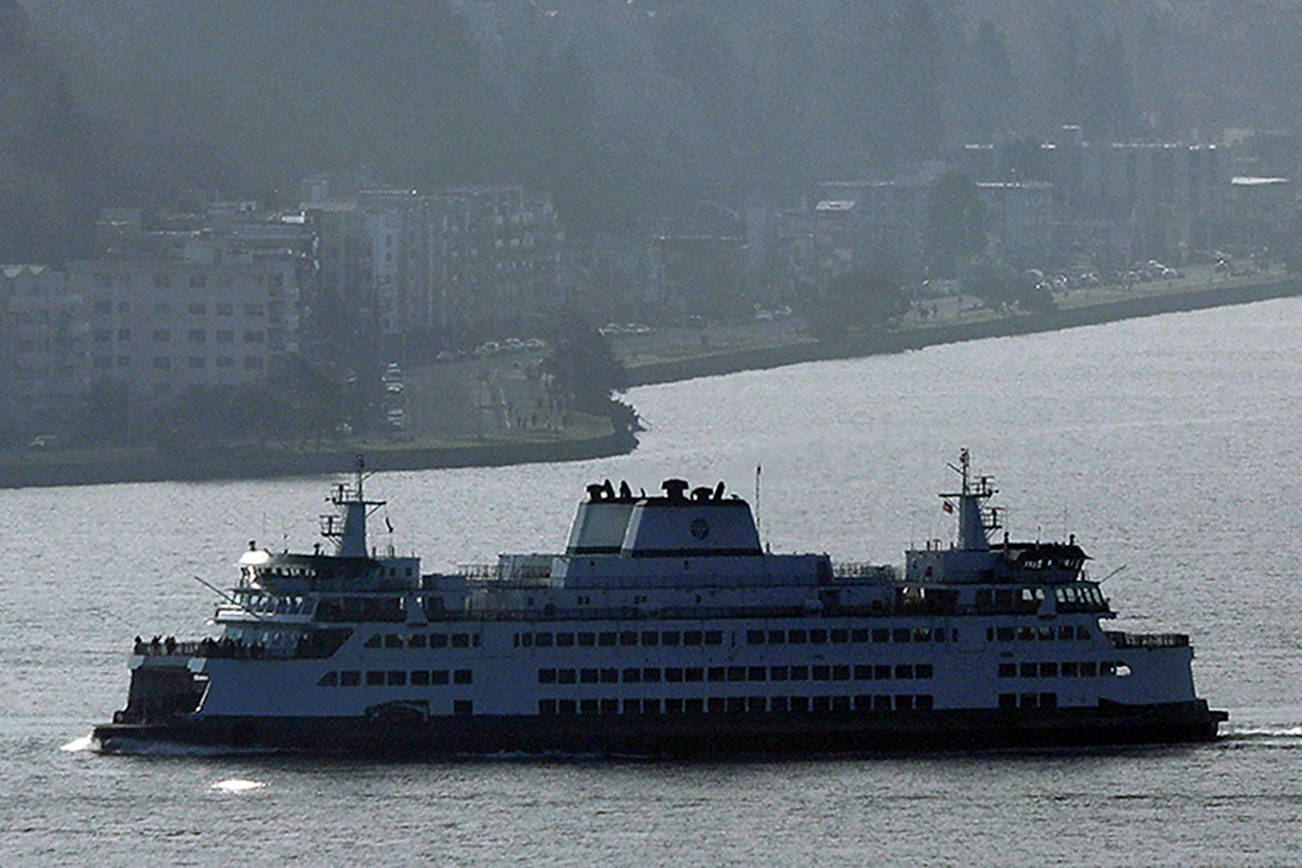OLYMPIA — Traveling on a state ferry is going to be noticeably more expensive this fall.
How much more will become clearer in the next two weeks.
Lawmakers are navigating different routes to generating enough additional revenue to cover day-to-day operating costs of Washington State Ferries and building of a new 144-car Olympic Class vessel powered by fuel and electricity.
Proposals pending in the House and Senate could lead to a boost in fares and the surcharge used for constructing boats, as well as imposition of a new fee for credit and debit card transactions.
Under one scenario, drivers could pay around $2 more to travel from Edmonds to Kingston. Commuters on that route could be shelling out another $35 for their multi-ride ticket.
The leader of the Senate Transportation Committee said Wednesday what he put together is the product of conversations with representatives of ferry communities and results of a survey of thousands of ferry riders.
“Before I did a bill, I presented the problem to the ferry caucus and they came up with our approach to a solution,” said Sen. Steve Hobbs, D-Lake Stevens, chairman of the Senate panel. “The public said if they have to pay more, they want it to go into the surcharge. We used what the input was.”
Rep. Jake Fey, D-Tacoma, Hobbs’ counterpart in the House, said a key goal in his caucus was ensuring riders continue to cover their share of ongoing costs as well as vessel construction.
The House plan assumes a one-time 6 percent fare increase effective Oct. 1. It also counts on bumping up the surcharge to $1 for each vehicle fare, an increase of 75 cents. Walk-on passengers, including those who bring a bicycle, would continue paying the current surcharge which is a quarter.
And starting Jan. 1, 2020, Washington State Ferries would have to collect a fee of around 2 percent for a charge card payment.
The Senate assumes fare increases of 2.5 percent Oct. 1 and 2.5 percent in October 2020. This would keep with the recent practices of the state Transportation Commission which is responsible for approving fare hikes.
Regarding the surcharge, Senate Bill 5992 calls for hiking it to 75 cents for multi-ride and monthly pass fares and to $1.25 on every one-way and round-trip fare sold. The idea is to give a small price break to commuters. A fee on credit card payments is not part of the Senate proposal, Hobbs said.
What do all the changes add up to?
The fare for a driver and standard vehicle on the Edmonds-Kingston route could rise from the present $15.35 to about $17.35 under the House plan and $16.73 with the Senate revisions.
On the Mukilteo-Clinton route, a one-way car and driver fare is $9.15 now but could be around $10.40 under both scenarios.
Passengers who walk on are going to fare better under the House plan by virtue of not having an extra dollar for the vessel replacement surcharge.
A fiscal analysis estimates the surcharge increase envisioned in the Senate bill would bring in $14.9 million for vessel replacement in the next biennium.
However, the same report predicts ridership will drop due to ferry fares being more expensive, leading to loss of $5.86 million from the operations account.
“It’s a prediction. It’s speculation,” Fey said of the numbers, adding, “If our ridership goes down, maybe we won’t need that fifth boat.”
Hobbs and Fey will need to reconcile differences before the session’s scheduled end April 28.
Jerry Cornfield: 360-352-8623; jcornfield@herald net.com. Twitter: @dospueblos.



